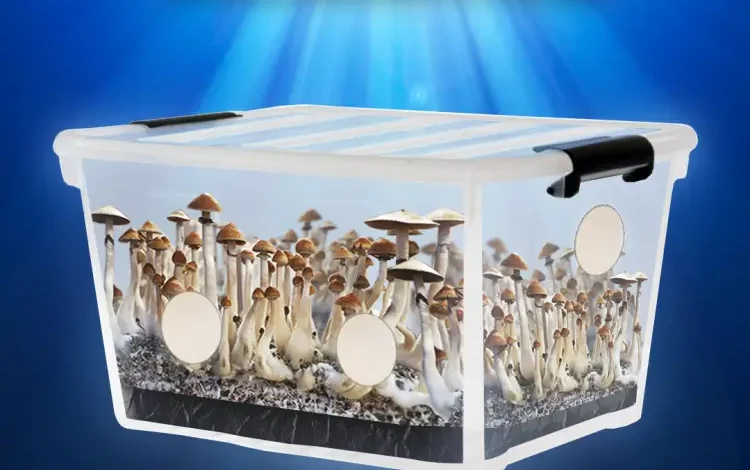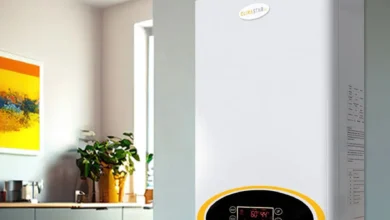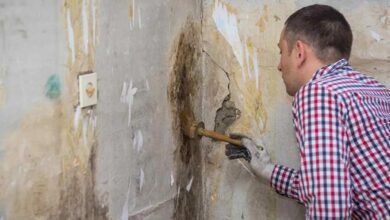
Are you a fan of delectable mushrooms but are fed up with grocery shop pricing that is too expensive? Homegrown mushroom cultivation can be both profitable and economical. The use of a monotub is one well-liked and effective technique for mushroom cultivation. In this thorough manual, we’ll lead you through every step of creating your very own monotub and raising fresh, abundant mushrooms in the convenience of your own home.
Describe a monotub
A monotub is a straightforward and efficient growth container for mushrooms. It is made out of a sizable plastic container with a secure lid. By preserving the right humidity, temperature, and ventilation, the container offers the best conditions for mushroom growth.
Why utilise a Monotub?
Growing mushrooms in a monotub is a common choice among growers due to its many benefits. First off, the monotub’s design offers a safe, regulated environment for the mushrooms to grow. The tight-fitting lid on the plastic container produces a microclimate that controls humidity and keeps moisture, two crucial elements for healthy mushroom growth. Your efforts to cultivate mushrooms will be more successful thanks to the regulated atmosphere that helps prevent contamination from outside sources.
Second, the monotub approach is effective and requires little upkeep. Once set up, it requires little maintenance, making it appropriate for both novice and seasoned growers. The monotub can become a self-sustaining ecosystem by properly preparing the substrate and adding mushroom spawn, which eliminates the need for ongoing supervision. Furthermore, the size of the monotub can be altered to match your desired production of mushrooms, providing flexibility and scalability for your cultivation operations. Overall, the monotub method is a great option for anyone trying to successfully grow mushrooms at home because of how straightforward and efficient it is.
What is the process of a Monotub Fruiting Chamber?
The Monotub Fruiting Chamber works on the premise of producing the perfect microenvironment for the fruiting of mushrooms. A tight-fitting lid is placed on the monotub once the substrate has been inoculated with mushroom spawn, producing a controlled environment inside.
The perlite layer at the bottom maintains correct humidity levels while the substrate supplies the nutrients required for mushroom growth. Carbon dioxide is produced by the mycelium when it colonises the substrate; if this process is unregulated, fruiting may be hampered. Small perforations or a cover that is only partially open allow for adequate gas exchange to address this.
The fruiting process, which encourages the mushrooms to form and mature into harvestable specimens, is triggered by the combination of controlled humidity, appropriate ventilation, and indirect light exposure within the monotub, finally leading to a successful and pleasant mushroom production experience.
How the Monotub’s airflow fosters fruiting conditions
Inside the monotub, airflow is essential for fostering fruiting conditions. The growing mycelium and mushroom caps produce carbon dioxide, which is continuously exchanged with new oxygen thanks to adequate ventilation.
This exchange is essential because too much carbon dioxide can prevent fruiting and result in subpar mushroom growth. The monotub lets the excess carbon dioxide to evaporate and ensures a healthy supply of oxygen for the mushroom growth by providing adequate ventilation.
Additionally, good airflow controls the humidity levels inside the monotub. To grow and thrive, mushrooms require a particular range of relative humidity. An excessive amount of moisture can allow water to accumulate, which might cause the mushrooms to become soggy or encourage contamination.
Insufficient humidity, on the other hand, might lead to dried-out mushrooms that are unable to grow to their full potential. The monotub provides the best atmosphere for the mushrooms to grow and develop by maintaining an ideal humidity level through controlled airflow.
Furthermore, the monotub’s airflow helps to uniformly distribute heat. Successful fruiting requires a constant temperature, and adequate airflow minimises temperature fluctuations inside the growing chamber. This equal distribution of heat helps the mushrooms grow and produce more fruit by creating a stable and ideal environment for them.
How to make a Monotub
A Monotub Fruiting Chamber Can Be Made By:
Gather Your Materials.
Begin by gathering all the supplies and equipment needed to construct your monotub fruiting chamber. To start, you’ll need a few things.
Paint or line your tub
Once your tub is prepared, you can decide whether to paint it or line it with an appropriate material. This action keeps the chamber’s environment favourable for the growth of mushrooms.
Puncture the Tub with Holes.
To properly ventilate and allow for airflow, gently cut holes in the tub. Successful mushroom fruiting depends on enough ventilation.
Cover or fill the holes
Make the holes, then seal them with breathable material or insert filters to keep the air flowing. This makes sure that the air exchange inside the chamber is regulated and appropriate for growing mushrooms.
You may create a useful and efficient monotub fruiting chamber for mushroom cultivation by following these four steps.
FAQS
What do I need to build a Monotub?
To build a Monotub for mushroom cultivation, you’ll need the following materials:
– Large plastic container with a secure-fitting lid.
– Substrate material, such as straw, sawdust, or a combination of both.
– Mushroom spawn, either purchased or self-made.
– Perlite to maintain humidity.
– Drill or a sterile tool for creating holes.
– Breathable material or filters for covering the holes
How do you make a bulk substrate for a Monotub?
You’ll need the following supplies to construct a Monotub for growing mushrooms:
A sizable plastic container with an airtight lid.
A substrate substance, such as sawdust, straw, or a combination of the two.
Purchased or homemade mushroom spawn.
Perlite for humidity maintenance.
A sterile tool for making holes, such as a drill.
Filters or breathable material to cover the gaps.
How does a Monotub work?
A monotub facilitates the fruiting of mushrooms by offering a regulated and confined habitat. A growing chamber is created by the container, and the substrate that has been combined with mushroom spawn creates the optimal environment for mycelium colonisation. Through holes in the tub, proper ventilation and humidity are maintained, encouraging a healthy mushroom development. After the mycelium has completely colonised the substrate, fruiting is triggered by fresh air and indirect light, which leads to the development of mushrooms.
Can you grow your own mycelium?
es, using mushroom spawn you can cultivate your own mycelium. The “seed” for mushroom cultivation is called mushroom spawn, which is essentially material that has been infected with mycelium. Alternatively, you can make your own by inoculating sterilised grain or substrate with mushroom spores. Both options are available from suppliers of pre-made mushroom spawn.
What size is a max yield Monotub?
Size of a maximum yield Depending on the desired mushroom production and the available space, the monotub can change. A max yield Monotub typically comes in sizes between 50 and 100 litres or more. For the best mushroom growth, it’s crucial to balance the container’s size with the right substrate and spawn ratios, as well as with enough ventilation and humidity.



